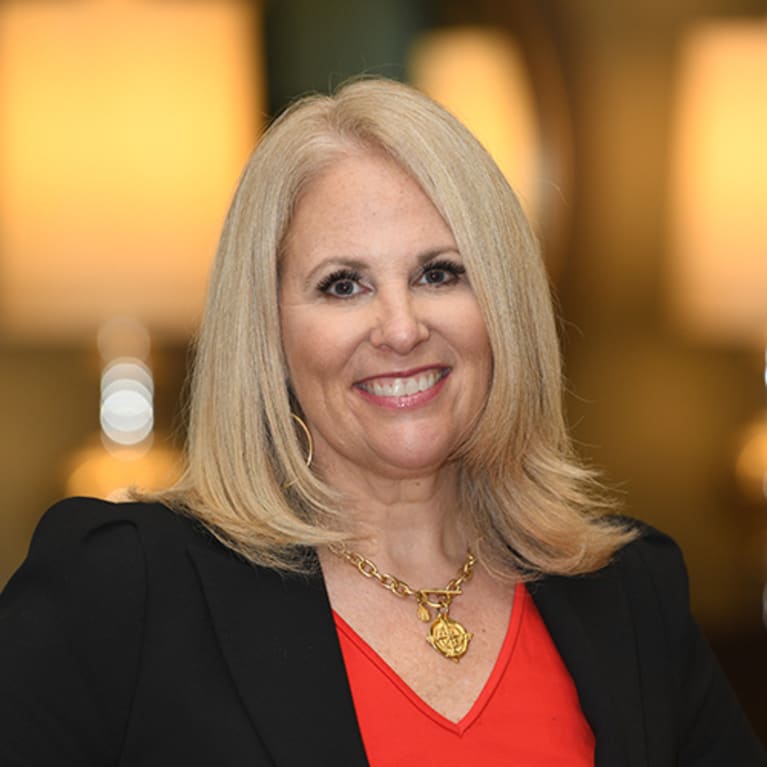
?Many attendees nodded knowingly when speaker Kristen Howe said, “Women are not advancing fast enough in the workplace,” on June 12 at the SHRM Annual Conference & Expo 2023 in Las Vegas. But her next statement drew audible gasps from the crowd.
 “We just passed the point where there are more women CEOs in the Fortune 500 than CEOs named John. And that’s crazy,” said Howe, chief product officer at Linkage, a women’s leadership development firm that SHRM acquired last year.
“We just passed the point where there are more women CEOs in the Fortune 500 than CEOs named John. And that’s crazy,” said Howe, chief product officer at Linkage, a women’s leadership development firm that SHRM acquired last year.
In 2023, women represent 10 percent of the Fortune 500 CEOs, an all-time high. But that’s not something that should be fully celebrated, Howe said during her concurrent session, “Mentorship? It’s all about Executive Sponsorship! Empower Your Executives to Become Inclusion Champions.” That’s especially true because numerous studies confirm that organizations with more gender-diverse leadership teams experience above-average profitability.
To build a diverse pipeline of leaders, more organizations have formalized their mentorship and sponsorship programs over the past decade. While both types of programs are related, the concepts aren’t interchangeable.
A mentorship is typically an informal program in which employees will share their knowledge with a co-worker. Sponsorships are formal programs in which sponsors are matched with rising leaders with the express purpose of advancing the person’s career. Instead of just sharing knowledge, sponsors use their power for their “sponsee.”
“Women tend to be over-mentored and under-sponsored,” Howe said. “The challenge with that is that mentorship does not have any bearing on a woman’s rate of advancement. What they need is sponsorship. Sponsorship helps women believe they can make it to the executive level in an organization, and they feel like they belong.”
Benefits Go Both Ways
A study by Linkage found that employees with sponsors are 69 percent more likely to believe they will advance to a more senior position. And companies with sponsorship programs also have higher retention rates.
What makes sponsorships so powerful? They’re a two-way street. When an organization’s inner circle makes a conscious decision to advocate for and strategically engage with women and underrepresented leaders below them, a strategic alliance is created. Protégés gain by having advocates working for their advancement.
Sponsors themselves also benefit. They can more effectively identify individuals’ strengths and strategically grow those individuals based on the protégés superpowers, creating more success for the company.
4 Steps to a Successful Program
A willingness to create an executive sponsorship program doesn’t necessarily make a program work. While sponsorship programs appear to be straightforward initiatives, in reality, they are extremely challenging—not only to implement but to sustain over time. Here are four ways to ensure success, according to Howe:
1. Define your “why” and track the program.
“People are going to ask you, ‘Why are we doing this? We have so many things to focus on.’ You need to have good answers, backed by data,” Howe said. She suggests HR leaders who are starting a sponsorship program arm themselves with stats, such as comparing the percentage of women in leadership to the overall percentage of women in the organization (or in the customer base).
Also, be prepared to define how you measure success and identify metrics to track the performance of the program. The best outcome metrics to track (pre- and post-program) are promotion, lateral movement and retention rates of women compared with men.
2. Recruit an influential executive champion.
Effective sponsorship programs require the buy-in of the entire leadership team. Organizations must create the space for sponsorship to occur, and executives need to model what a successful sponsor acts like.
“You’re going to need someone with influence and power to promote this program and keep you on track,” Howe said. “You want this champion to make this idea of sponsorship a core leadership value, so it’s not a side project that executives are working on, but a core piece of the executive’s job.”
3. Teach sponsors how to sponsor.
Clearly defining the sponsor’s role and providing foundational training is critical. Being a great executive does not always automatically equate to being a great sponsor. In fact, many executives are not innately equipped with the necessary skills. A successful program should detail what being a sponsor really means and hold executives accountable for their responsibilities.
“Sponsors may think they know what they’re doing because they’ve been mentors and coaches before, but they don’t. This is different. This is sponsorship,” said Howe.
She says successful sponsors need to help female executives in three key areas:
- Build confidence. The good news is that most women are confident, Howe said, noting that Linkage research says 70 percent of women agree that they’re equally or more qualified than their male peers. The problem is that they’re not telling anybody, as only 13 percent of women say they promote their own accomplishments at work. “Sponsors need to help women figure out how to self-promote in a way that feels authentic and is acceptable in the organization,” Howe said.
- Prove your value. A Linkage survey found that 81 percent of women say they say “yes” to all work requests, even unreasonable ones. “Sponsors need to help women say no,” Howe said.
- Show clarity. Many women aren’t prepared to articulate their work goals, making it harder to align and promote those goals. “Sponsors can help women concretely figure out what does their career look like, what are the skills they need to be acquiring and to make sure they’re getting those skills,” Howe said.
4. Launch new sponsorship cohorts every year.
“Gen Z employees that are just entering the workforce are very ambitious. But if they look up and don’t see women succeeding in leadership, they’re going to leave. So you need to give them something to aspire to,” Howe said.
She said it’s vital to launch new sponsorship groups regularly, at least annually, and market them internally so women are excited about them. Also, create multiple avenues for someone to be selected as a participant in the program, and engage sponsors to convince other executives to become sponsors.
“You want people to be engaged in the idea of the program even if they’re not in it,” Howe said. “They need to know that it’s continuing and thriving.”

